A history of the microcomputer industry in 300 adverts
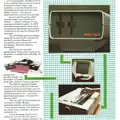
Shelton
December 1981
4MHz Z80A, 64K RAM, twin 200K disks for £1299
Here is probably the first advert of Chris Shelton's Sig/Net, launched around July or August this year. Shelton, who had once worked for Nascom, had started Shelton Instruments ...
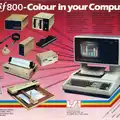
OKI
February 1982
The if800 - Colour in your computing
The awkwardly-named if800 from OKI - first launched in 1980 - was on the face of it yet another conventional Z80A-based micro, however it differed from many by coming with an inte...

Altos
December 1981
Dealers, we'll help you out of the microcomputer jungle
In the days before visual accessibility guidelines existed, and aimed more at potential dealers than the general public, this advert for Altos is actually placed by Microtex of Wi...
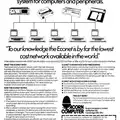
Acorn
August 1981
The Acorn Econet: the new low-cost interconnecting communication system for computers and peripherals
Here's a rare advert for Acorn's Econet - an affordable network using cheap four- or five-wire cabling (instead of the coaxial cabling found on some other networks) and which coul...
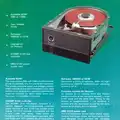
Hotel Microsystems
November 1981
5¼" Winchesters - from Hotel Microsystems
Over a year before Hotel Microsystems Limited - later HM Systems - launched its first microcomputer, the Minstrel, comes this advert positioning the company as an importer and par...
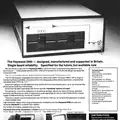
Haywood
August 1981
Some Hard Facts from Haywood
Given the side-bar looking for distributors, this would appear to be a fairly early advert from Haywood Electronic Associates, trading as Haywood. However, the company appeared to...
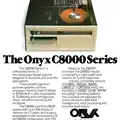
Onyx
August 1981
The Onyx C8000 Series
Onyx was formed in December 1978 by two former Zilog employees, Robert Marsh and Kip Myers, with some additional input from fellow former Zilog employee Doug Broiles, who had left...
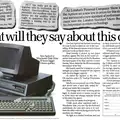
ACT/Apricot
June 1984
Apricot Xi: What will they say about this one?
Less than a year before Applied Computer Techniques, or ACT, changed its company name to that of its first computer - Apricot - comes this advert for its Xi model. ACT, which had...
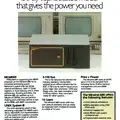
Hotel Microsystems
June 1984
Minstrel 68K - A truly sophisticated model that gives the power you need
This crossover advert takes March 1983's Z80-based Minstrel from Hotel Microsystems, replaces the Z80 with a Motorola 68000, rebrands the company as HM Systems and releases the ma...
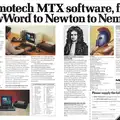
Memotech
June 1984
Memotech MTX Software: From NewWord to Newton to Nemo
Here's an attempt by Memotech to advertise itself as a software company, and to position its MTX512 as a dedicated word processing system - an approach that just a few years befor...
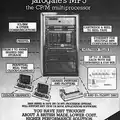
Jarogate
June 1984
If you are thinking of buying more than one PC - think again
It's another all-British (for a definition ignoring the fact that most of the chips came from the Far East or the US) multi-user system, this time from Jarogate of Brixton in Lond...
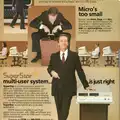
Bromcom
June 1984
SuperStar Multi-User System is Just Right
Bromcom - initially known as Bromley Computer Consultancy Ltd - launched its SuperStar multi-user system at the beginning of 1984. Running a 16-bit host processor with the compan...
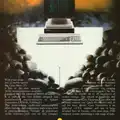
Casu Electronics
June 1984
Compact System for Professionals
Once mentioned in Parliament as one of only two British computer manufacturers on the government's Central Computer and Telecommunications Agency list of approved suppliers to hav...
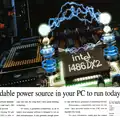
Intel
December 1993
The affordable power source in your PC to run today's games.
Intel didn't do a huge amount of advertising, seeming to prefer to allow word-of-mouth, or inertia, to do its selling. In the early 1970s, it had the hobbyist and microcomputer m...
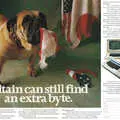
LSI
November 1982
Britain can still find an extra byte
Here's an advert from the curiously-named Computer Ancilliaries Limited, for what at first appear to be two of its machines - the British-built Caltext Word Processor and the Calt...